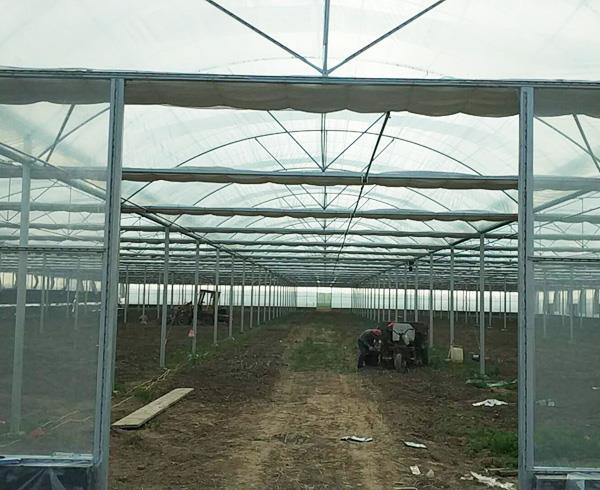
2020-08-14
Today we will introduce four types of vegetable greenhouse films:
PVC film, PE film, EVA film and purple film.
1. The advantages of PVC film (non-drip film) are:
(1) After covering, the water droplets accumulated on the inner surface of the greenhouse film can flow along the slope to the corner of the greenhouse, with good water permeability and low humidity in the greenhouse, which can reduce the occurrence of different diseases.
(2) The temperature in the greenhouse is 4 to 5 degrees higher than the temperature of the dripping film, which is conducive to safe overwintering and faster growth of greenhouse vegetables.
(3) Anti-aging, generally used for more than 2 years.
Disadvantages:
(1) The film thickness is 10-12um, and it needs about 125-130kg to cover a 100m long greenhouse, with large consumables.
(2) The film width is generally 3-4m, which is inconvenient to use.
(3) The price is 20%-30% higher than that of drip irrigation film. Recommendation: Can be used for spring fruit and vegetable production.
2. The advantages of PE vegetable greenhouse film are:
(1) The width of the polyethylene film is 8-10m, and it does not need to be glued when covering, which is more convenient to use.
(2) 70μm-8um thick consumables only need to cover 100m thick film.
Disadvantages:
(1) After the film is covered, a large number of water droplets will accumulate on the surface of the film, which will easily cause excessive humidity and increase disease.
(2) Water droplets in the film will also seriously affect the light transmittance, resulting in low temperature and weak light in the greenhouse, which will hinder the growth of vegetables and reduce yield and benefits. Recommendation: It can be used for low-temperature and low-light leafy vegetables such as leeks and celery and cold shed production.
3. EVA (composite film) has the advantages of dustproof and no dripping.
Disadvantages: The film thickness and price are close to those of non-drip film, which is only effective when used actively. Suggestion: It can be used for greenhouse vegetable production in winter and spring.
4. The advantages of the purple light film: it can absorb and reflect purple light, reduce the purple light in the greenhouse, promote the flourishing of vegetable branches and leaves, and achieve the effect of higher yield and better quality.
Disadvantages: The film has a short life after absorbing violet light. Suggestion: Can be used for staple food, stem and leaf vegetables, such as leeks, celery, Chinese cabbage, lettuce, spinach, coriander, green onions, garlic sprouts, etc. Agricultural personnel reminder: When vegetable greenhouse growers choose plastic film, they must not only look at whether the surface is smooth, whether there are stains and cracks, but also consider the inherent light transmittance, water permeability, heat preservation and aging resistance.
Hope that we can help you with the information about the four kinds of vegetable greenhouse films we introduced above.
